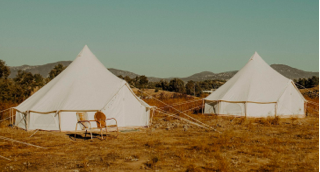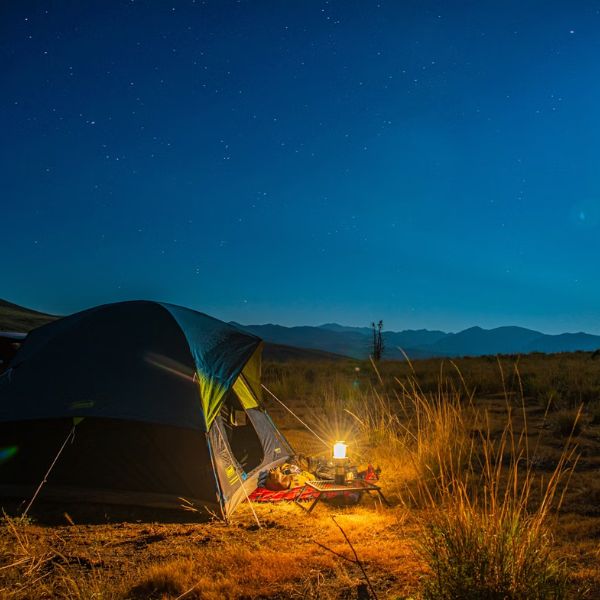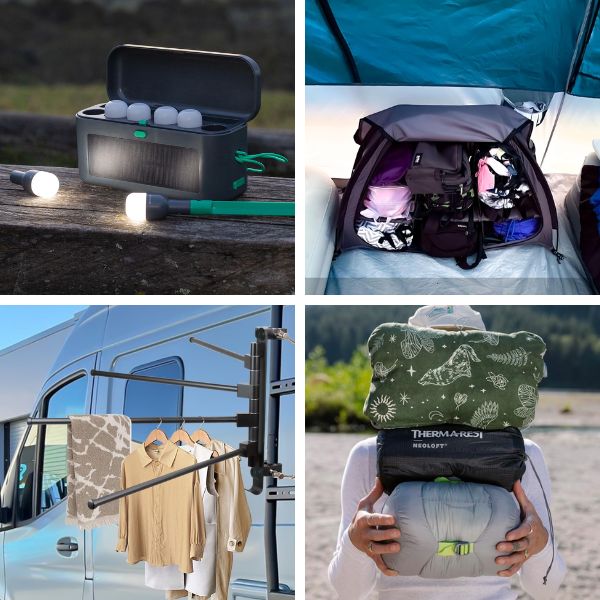LIVRAISON GRATUITE
PAY NO SALES TAX
Menu
-
- Boutique
- Tentes de camping
- Wall Tents
- Tente en toile
- Tentes cloches
- Tentes de festival
- Tentes de chasse
- Tentes Yourtes
- Tentes familiales
- Tente d'observation des étoiles
- Tentes cabanes
- Cadeaux de camping
- Tentes terrestres
- Poêles de tente
- Tente 4 personnes
- 6 Person Tents
- Tente 8 personnes
- 12 Person Tents
- Tente 6 personnes
- Équipement de camping
- Camping Chairs
- Shade Canopy Tents
- Camping Fans
- Prestations de service
- À propos
- Contact Us
- Reviews
-
- Connexion

Free Shipping

Pay No Sales Tax
30-Month Warranty
LIVRAISON GRATUITE
PAY NO SALES TAX
Tentes
À propos
Boutique


La liste LiT
Idées de glamping et de camping + ressources
The History of Bell Tents: From Battles to Festivals
5 lire la lecture
Bell tents are timeless. Despite their recent revival in the glamping era that continues to thrive, the history of bell tents goes back ages. Ancient nomadic tribes, military campaigns, and beyond, you might be surprised to learn where they’ve been.
Ever wonder about the background and history of bell tents? From earning their stripes in the military (figuratively) to hosting weddings and music festival-lovers today, bell tents have a fascinating and storied past. Read on to learn all about the history of bell tents.
The Earliest Origins of the Bell Tent

The British Army and the Crimean War

British cavalry during the Crimean War. Photograph by Roger Fenton.
The Crimean War (1853-1856), a conflict between the Russian Empire and the Ottoman Empire, France, Britain, and Sardinia, is most notable for its modern military technology and tactics. In fact, the Crimean War was a milestone in military history and warfare. Part of this significant mark in history is, in part, thanks to the shelter used by the British Army: the bell tent.
The bell tents' conical shape ensured efficient water runoff and their spaciousness housed multiple soldiers as well as acted as hospitals and command centers. Plus, bell tents were just as nomadic, allowing the army to reposition themselves at a moment’s notice. It could be said that the use of bell tents as sleeping quarters in the Crimean War improved the living conditions of soldiers and ultimately contributed to the morale and health of the troops.
The British Army continued to use the bell tent design, even up into the mid-19th Century and early 20th Century when they were widely used by the Commonwealth armies as command posts, field hospitals, and barracks.
The Iconic Sibley Bell Tent

The Sibley Tent, patented in 1856 by Henry Hopkins Sibley, is a variation of the bell tent. The only difference is in their wall design. As a US Army Colonel, Sibley spent many years in the American Old West, during which time he studied and took note of the durable Native American Tipi design with its sloped walls and tripod configuration that created a pitched roof and opening where smoke could escape.
However, Colonel Sibley understood how to translate the tipi’s native design features into temporary housing structures for the US military and frontier exploration. Inspired by the tipi’s practical conical shape, central pole, and smoke flaps, Sibley patented this bell tent style to be more portable and weather-resistant, which helped it to become the shelter of choice for the US Army’s Utah Expedition (1857-58) and eventually the American Civil War. Amidst this time, the Sibley Tent also became the primary shelter for settlers, explorers, and adventurers too, eventually establishing its legacy and iconic bell tent shape.
Bell Tents and Recreational Camping

After the bell tent’s long stint of service in the military, they became used for more recreational purposes by society and everyday civilians. Around the late 19th Century and into the turn of the 20th Century, bell tents became sought after by explorers, hunters, and folks simply seeking an escape into nature. Thanks to conservationists and naturalists like John Muir and President Teddy Roosevelt, folks ventured into nature to seek solitude and appreciate the newly created National Parks. Camping became a recreational activity for many.
Eventually, bell tents played a major role in the Scouting Movement, as did the A-frame style pup tent. A former military man himself, Robert Baden-Powell promoted the bell tent and pup tent in his Boy Scout Handbook, which were easily found at military surplus stores at the time (and really, still to this day!). So the Boy Scouts and Girl Scouts of America bought these reliable bell tent shelters for camping trips and jamborees.
Modern Advancements and the Rise of Glamping
The mid-20th Century brought about many advancements, including both technology and materials. During this time, innovations in camping gear exploded, making recreational camping more accessible than ever before. For example, synthetic fibers like nylon made camping tents lighter and stronger lightweight metal poles replaced wooden frames.
The bell tent got some upgrades too. Even despite these modern advancements in camping gear, the majority of folks still appreciate and prefer the breathable, durable, and natural material of canvas bell tents. Still popular among outdoor enthusiasts, its legacy stands the test of time.
In the 21st Century, camping not only became more accessible, but it opened doors for a new type of camper seeking the peace of nature with the creature comforts of home. That’s when the camping industry saw the rise of luxurious camping (or glamping, as we’ve coined the term today). Beautiful, durable, spacious, and homey-feeling, it should come as no surprise that bell tents became the go-to tent for campers looking for a luxury camping experience. Today, bell tents are outfitted to the nines with things like cozy queen-sized beds, stylish furnishings, clear panel roofs for stargazing, and even wood-burning stoves.
From Battles to Festivals: More than Glamping

With all these modern amenities offered in a bell tent, they have become the tent of choice used for all sorts of recreational camping events, including music festivals, wellness retreats, and weddings.
Still, once the tried-and-true for housing soldiers in battle, the bell tent is just as reliable and steadfast today. Beyond glamping rentals and backyard slumber parties, overlanders and hunters still pitch bell tents as hot tent shelters and outfitter hunting camps in the wilderness.
So whether you call yourself a seasoned recreational camper, glamping enthusiast, or a rugged nature conservationist, don’t be fooled! The long and varied history of bell tents is proof of their legendary acclaim.
Bell Tents for All
Gone are the days when you had to swing into the army surplus store to grab a bell tent. Now, anyone can buy a bell tent!
Inspired by the Sibley tent design, Life inTents offers several bell tent models and sizes to create an adorable camping shelter for couples, families, and more. Plus, each Life inTents bell tent is designed with modern materials (especially in the canvas treatment) while staying true to its timeless looks.
Laisser un commentaire
Les commentaires sont approuvés avant leur publication.
Related Resources

LA LISTE ÉCLAIRÉE 5 lire la lecture
Top 10 Features to Look for in a Camping Lantern
An essential piece of gear for any outdoor enthusiast is a camping lantern. Whether setting up camp,In search of the perfect camping lantern? Here are some top features to look for, from rechargeable battery and solar to dimmable LED brightness settings and more.

LA LISTE ÉCLAIRÉE 7 lire la lecture
The LIT Guide to Camping Tent Accessories
The right accessories for camping tents can turn a simple shelter into a cozy, well-equipped retreatElevate your outdoor experience with the right camping tent accessories.
Blogues populaires
1. Qu’est-ce que le Glamping ?
2. Comment démarrer une entreprise de glamping
3. Créez une plate-forme de tente cloche
4. Les meilleures toilettes portables pour le camping
5. Comment installer et plier une tente cloche
6. Les meilleurs poêles de tente à cloche – Façons de chauffer une tente en toile
Produits populaires
S'abonner
Inscrivez-vous pour recevoir les dernières nouvelles sur les ventes, les nouveautés et les conseils
DEVENEZ UN INITIÉ
Nous partagerons périodiquement avec vous des idées, des sorties de tentes cloches, des offres spéciales et des notifications d'événements.


